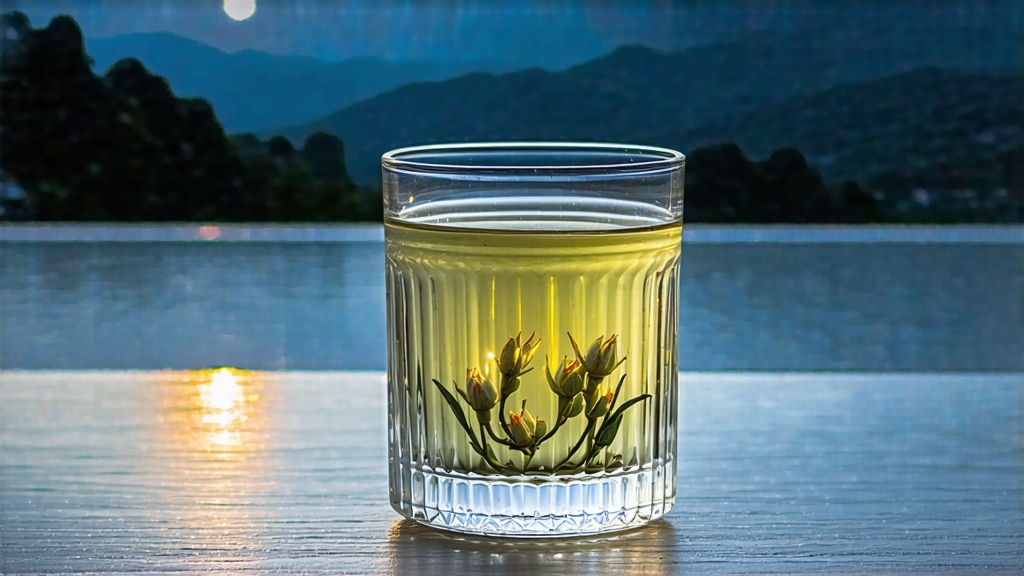
If green tea is the youthful scholar of Chinese tea culture and pu-erh the venerable sage, then Bai Hao Yin Zhen—literally “White Hair Silver Needle”—is the moonlit poet who arrives quietly, recites one luminous line, and vanishes. Among all white teas, Silver Needle is the rarest, the most understated, and, to those who learn its language, the most eloquent. International drinkers often meet white tea through the mellow, leaf-and-bud blends called White Peony or Gong Mei, yet the pinnacle of the category remains this single-bud tea that looks like nothing more than a handful of slender twigs until water resurrects it.
A 2000-year-old Fujian proverb claims that “tea is the moon’s diary, written on fog.” Silver Needle is the entry written on the first clear night after the Qingming festival, when the air is still cold enough to silver the buds with down and the mountain mist is thick enough to slow time. The following pages trace that diary entry from its Tang-dynasty beginnings to your own teapot.
- Historical whispers
The first reliably dated reference to a “white” tea appears in the Song-era treatise Dong Xi Kao, describing tribute cakes pressed from pale-colored leaves growing in northern Fujian. Those cakes, however, were green teas accidentally low in chlorophyll; the true minimally-processed white tea we recognise today emerged during the late 1700s around Taimu Mountain in Fuding county. Farmers discovered that the local Da Bai Hao (“Big White Down”) cultivar produced unusually plump buds whose silvery hairs resisted rolling and oxidation. By simply air-drying them, they obtained a liquor so delicate that it was presented to the Guangxu Emperor in 1891. The imperial response was succinct: “lighter than moonlight, sweeter than snow.” The name Silver Needle stuck, and the tea became one of the first Chinese specialties to travel beyond Asia, displayed at the 1915 Panama-Pacific International Exposition in San Francisco where it won a gold medal.
Yet fame almost undid it. Through the wars and communes of the twentieth century, production withered; in 1978 only 300 kg were made in all of Fujian. Revival began in 1985 when the provincial government designated Fuding and Zhenghe as protected origin zones, grafting ancient Da Bai Hao bushes onto new rootstock and teaching villagers the forgotten art of “letting the moon finish the tea.” Today fewer than five thousand households are licensed to produce authentic Silver Needle, and annual export rarely exceeds fifteen metric tons—less than the hourly output of a single Keemun factory.
-
Terroir and cultivar
Authentic Silver Needle comes from only two micro-watersheds: the first is the eastern slope of Taimu Mountain in Fuding, where granitic soils drain quickly and the East China Sea injects humidity at night; the second is the high plateau of Zhenghe county further inland, where cooler temperatures lengthen the withering phase. Within these zones, only two clonal varieties are permitted: Fuding Da Bai Hao and Zhenghe Da Bai Hao. The former yields slimmer buds with a jasmine-lactone fragrance, while the latter produces sturdier needles rich in cocoa-polyphenols that steep into a creamier body. Connoisseurs speak of “east needle” versus “west needle” much as Burgundy lovers contrast Côte de Nuits with Côte de Beaune. -
The craft of doing almost nothing
Silver Needle’s processing is maddeningly simple to describe and fiendishly difficult to master. Picking begins when the morning dew is still on the bud but the sun is high enough to evaporate surface moisture—usually between 9 a.m. and noon on clear days from mid-March to early April. Only the unopened bud, ideally 1.5–2.5 cm long and still sheathed in its fish-scale sepals, is taken. A skilled picker can gather just 500 g of fresh buds in a day; 25 000 buds equal 500 g of finished tea.
The buds are then spread on bamboo trays woven from two-year-old mao zhu; older bamboo holds less residual odor. For the next 36–48 hours they rest in a three-stage withering chamber:
- Stage 1 (27 °C, 65 % RH) softens cell walls and initiates enzymatic oxidation so subtle it is measured in milligrams of